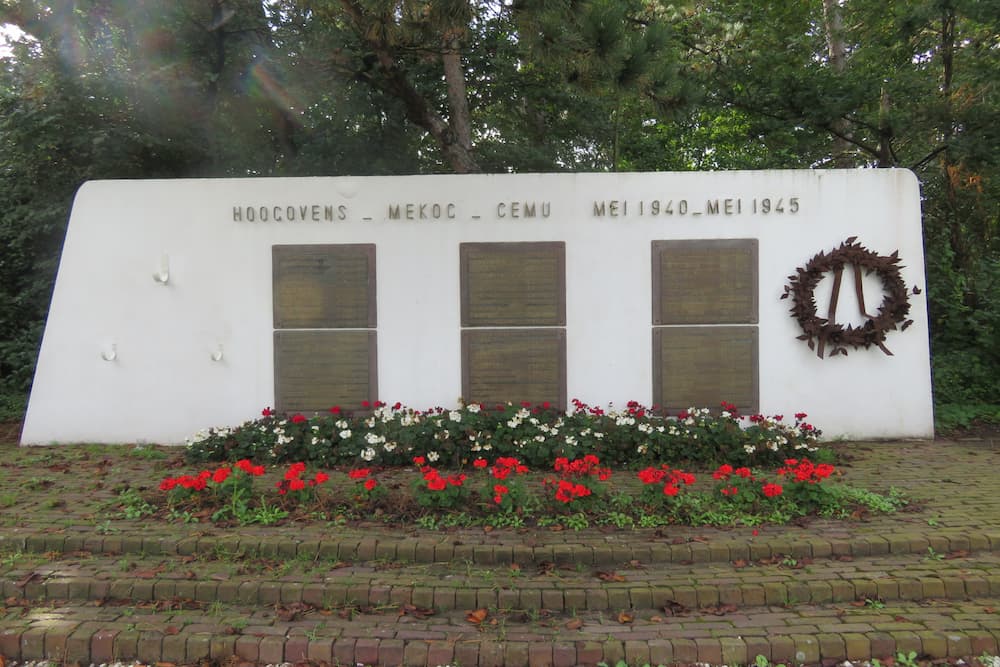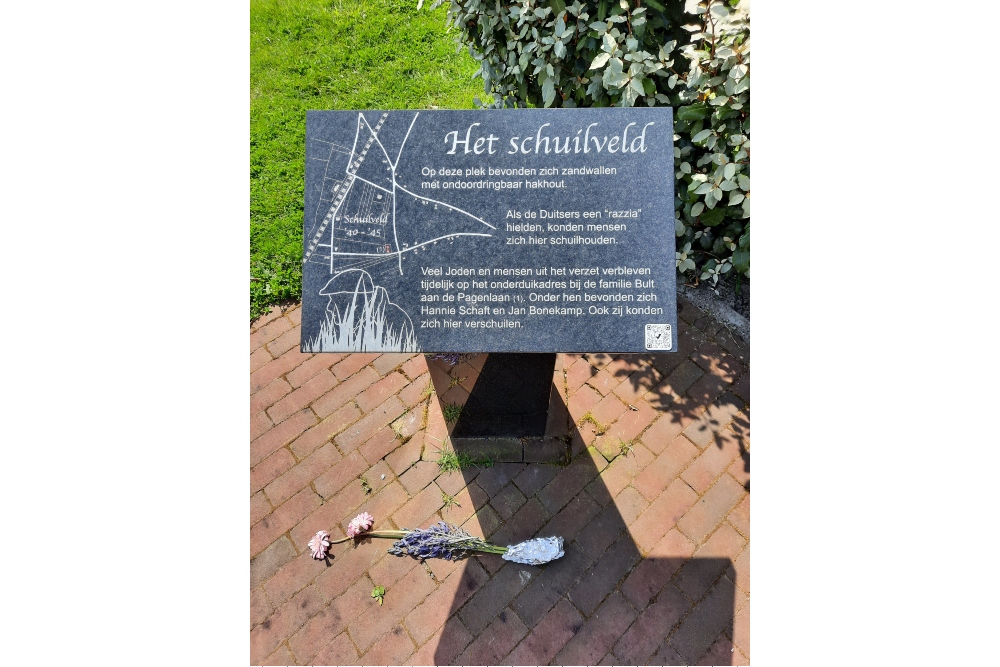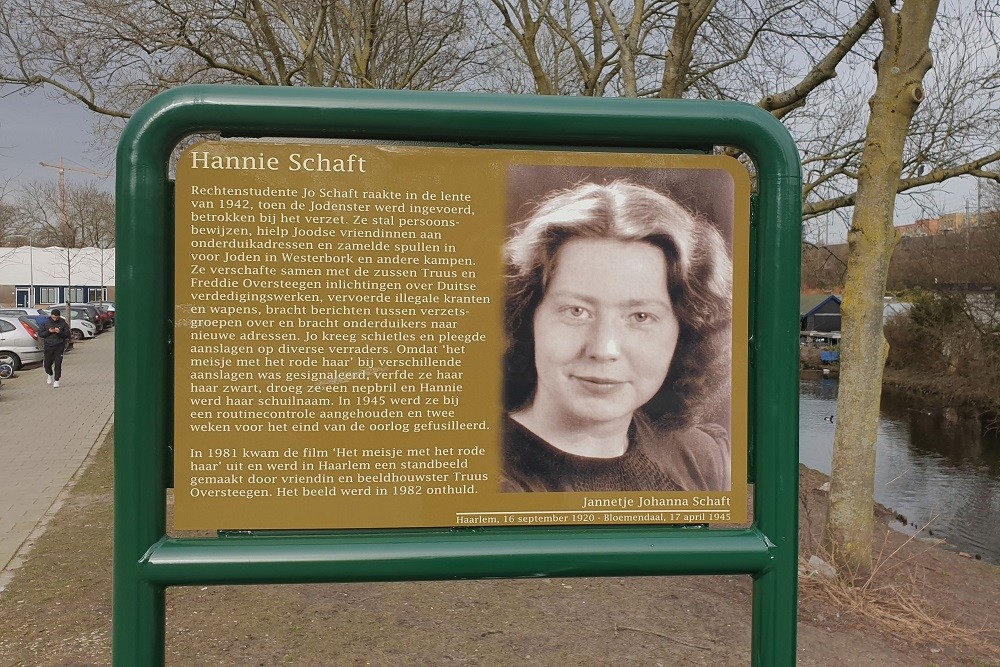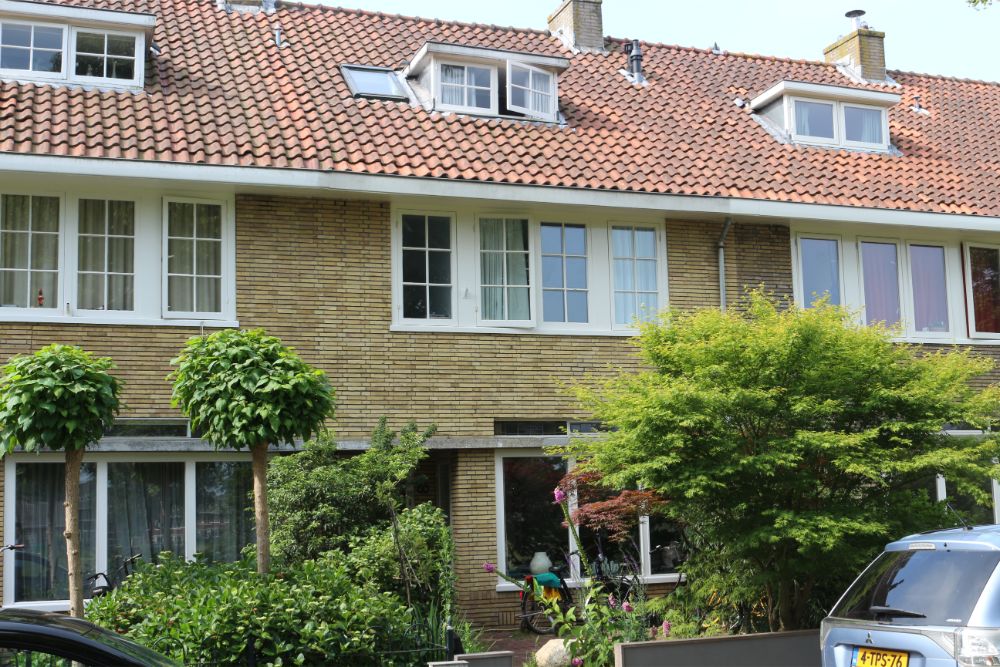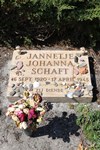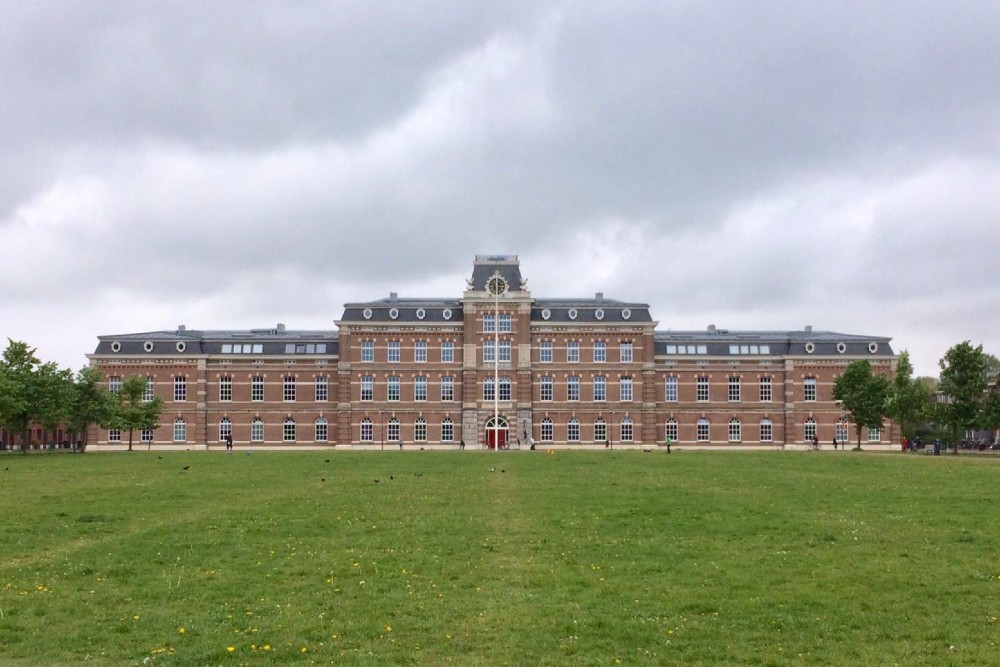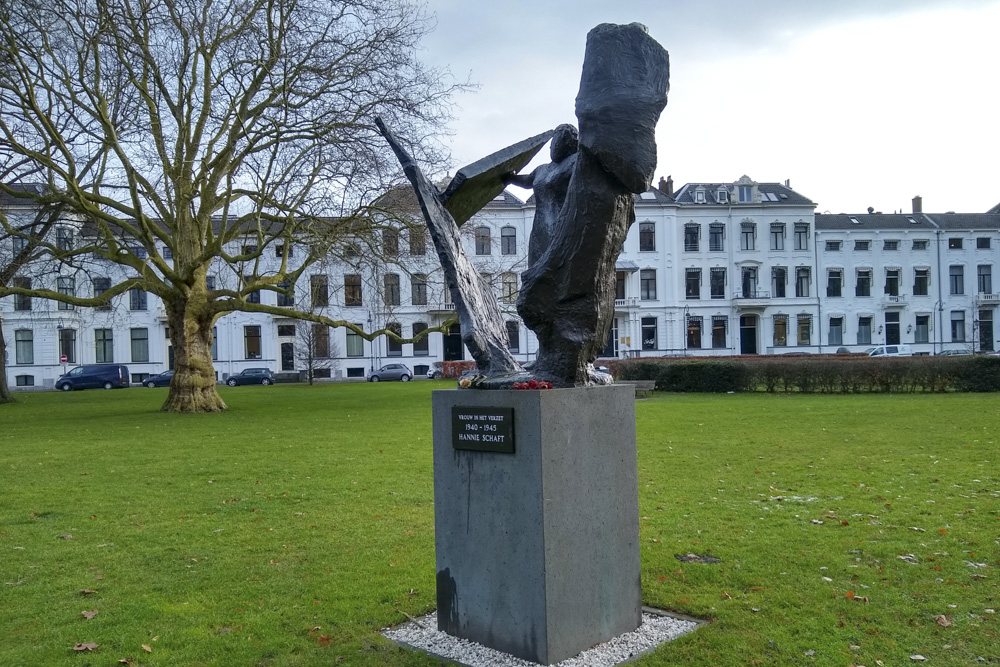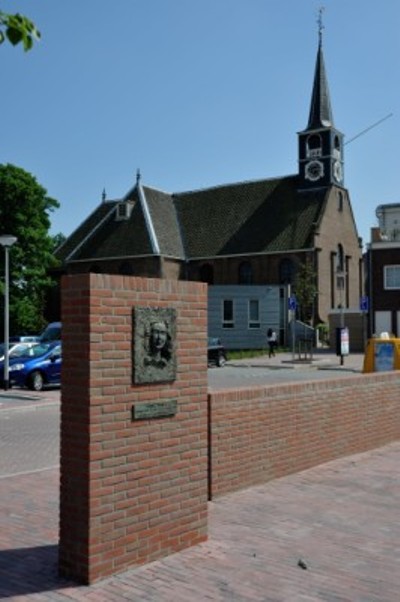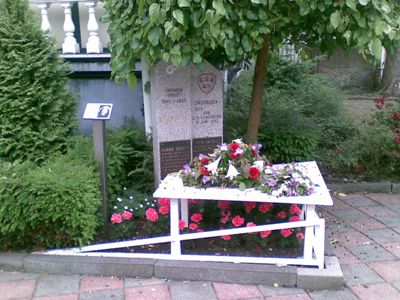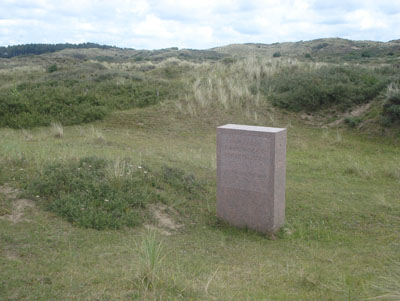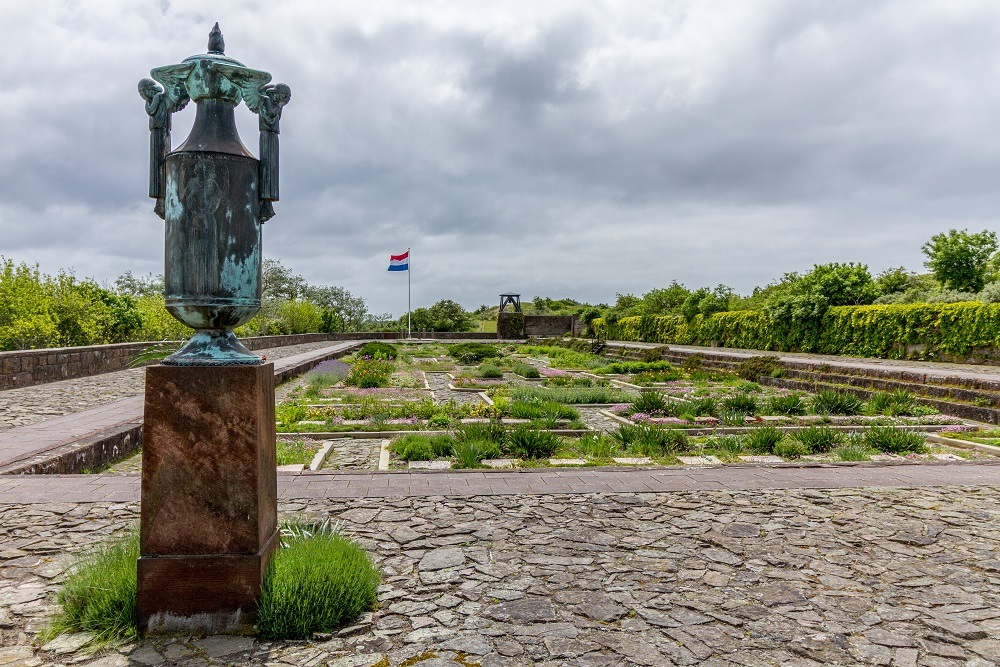Hannie Schaft, the redheaded girl
Childhood
Jannetje Johanna Schaft was born on September 16th 1920 in Haarlem. She was the second daughter of Pieter Schaft and Aafje Talea Vrijer. Her elder sister Annie, who was born in 1915, died from diphtheria in 1927. Jo, as she was called, had a normal upbringing in a small socialist family. Her father was a teacher at an elementary school and was a member of the board of the socialistically inclined Federation of Dutch Teachers.
Jo went to Tetterode School in Haarlem. She was an excellent student who was quite modest but did not have much contact with her class mates. She was regularly bullied because of her red hair and freckles. After finishing elementary school in 1932 Jo went to the Hogereburgerschool at the Santpoorterplein near her parents’ home. Although still somewhat secluded she had a good time which showed in her grades. Her fellow students thought she was a bit of a nerd, she was always dressed in an un-fashionable way and according to Miep Merkuur who was a good school friend of Jo’s "she often wore a cardigan when it was hot because her parents were afraid she might catch a cold".
The Schaft family were quite isolated too. Jo’s mother came from an ardent socialist preacher’s family and her father was an active member of the SDAP, the Social Democratic Labour Party. As such, Jo grew up with social-democratic views, especially regarding justice and equality.
In 1938 Jo graduated with high grades in German, French, Dutch, English, History, Botany and Zoology. Although she originally wanted to become a teacher she decided to study Law at the University of Amsterdam. In order to be allowed to study there she first had to complete a state exam in Greek and Latin, which she passed.
At the University of Amsterdam she specialized in International Law and later she wanted to go to Geneva to breathe new life into the League of Nations. In Amsterdam she became member of the AVSV ( Amsterdam Female Students Association) and her former secluded life was soon over. Within this association she founded a new division together with some friends. This division was named "Gemma" (from the Latin phrase "gemmare e minoribus appentinus" meaning "from small things we aspire towards the great").During that time not much time was devoted to studying.
War years and resistance.
In May,1940, war broke out in Holland but after the capitulation life soon returned to normal, also for Jo. On July,1st of that year, Jo graduated and she moved to the Michelangelostraat 59 in Amsterdam South, together with her friends Nellie Luyting and Annie van Calsum.
In the meantime her hatred of the Nazis grew and she started to help the oppressed and to act against the occupier, albeit on a small scale. After the yellow Star of David became obligatory she frequently stole IDs from non-Jewish women. She also sent parcels to Westerbork and to other concentration camps. Her own life changed as well when the Germans demanded a declaration of loyalty from all students in 1943. Like 80% of all students she refused to sign this .Since life at university had effectively been suspended, she returned to her parental home in Haarlem. Two of her Jewish fellow students and friends, Philine Polak and Sonja Frenk, joined Jo, hoping that her parents would give them shelter and a place to hide.
At the end of April 1943 the RVV (Raad van Verzet - Council of Resistance) was formed, a national overall organization for dutch resistance groups. Jo got in contact with the RVV in Haarlem. Quite soon the RVV found her trustworthy and the first assignment was given to her. This assignment was a targeted assassination of a member of the Sicherheitsdienst or SD together with resistance fighter Cor Rusman. Later this turned out to be a test, because when Jo pulled the trigger she heard a click instead of a shot. The SD man was none other than Frans van der Wiel, CO of the RVV in Haarlem. Although Jo was furious she stood this test of ability and reliability and she was proven to be capable enough for work in the resistance. In the headquarters at the Wagenweg 246, Jo, who was now known as Hannie, learned a lot about weapons and took part in shooting lessons on a regular basis. She associated with German soldiers to get necessary information. Due to her affiliations she was considered a possible traitor by some members of the resistance.
The first major act Hannie took part in was on November 27th ,1943 when, together with Jan Bonekamp, Jan Brasser and a fourth RVV operative, they tried to sabotage the power plant of the electrical company, the Provinciaal Elektriciteitsbedrijf van Noord-Holland in Velsen-Noord. Although the campaign was unsuccessful, it was a morale booster for the local population. On January 20th,1944, Hannie took part in a new act of sabotage. This time the Rembrandt cinema on the Grote Markt in Haarlem was the target because this cinema regularly showed German propaganda films. The attempt failed because the fire bombs the resistance had placed were prematurely discovered.
Since the German Sicherheitsdienst stepped up its raids, Hannie decided to leave her parental house and hid for two months in Limmen at the Pagenlaan 8 at the same address as her brother in arms, Jan Bonekamp. Hannie and Jan were stubborn and fanatical and Jan in particular committed a lot of assassinations, armed robberies and acts of sabotage.
After D-Day in Normandy on June 6th, 1944, Hannie and Jan shot Piet Faber, a baker who was suspected for his treachery. Their next assignment was to eliminate police captain Ragut from Zaandam. After several days of reconnaissance the attempt began on June, 21st, 1944. They awaited the captain in Zaandam, Hannie shot him and cycled away hastily. At the same moment bombers passed overhead and the bystanders thought Ragut had been hit by fire from the bombers. Jan moved closer in order to give Ragut the coup-de-grâce. Ragut, although mortally injured and lying on the street, shot Jan in the stomach. Jan, heavily injured, was taken to a nearby police post. He was put in a cell awaiting transportation to a hospital. An agent however had alerted the Sicherheitsdienst. Jan received an injection with a stimulating substance that was meant to make him talk. Before dying he gave the address of his wife and probably also that of Cor Koelman, a RVV operative who had frequently worked with Hannie.
Since it had become incredibly dangerous for Hannie, the RVV knew she needed a new safe house. Hannie, emotionally strained by the death of Jan, hid with the Elsinga family, who were good friends with her parents .As a result of her parents being arrested by the SD, it became clear that Hannie should keep a low profile and that she needed to change her appearance. A hairdresser coloured her hair black and she wore glasses with fake lenses. A trusted employee inserted a new ID for her into the population register under the name Johanna Elderkamp, a woman who at least on paper was born in Zürich in Switzerland. Slowly she recovered and she restarted her illegal work. Repeatedly Hannie provided courier services for the resistance between Velsen and The Hague. On Christmas Eve of 1944 she helped collect five crates of ammunition from the Kriegsmarine naval base of IJmuiden.
In the evening of March,21st, 1945 Hannie rode a bicycle from Haarlem to IJmuiden with some copies of the illegal newspaper "De Waarheid". At a German checkpoint at the Jan Gijzen bridge in Haarlem she was detained when after checking her, the newspapers and a pistol were found. She was transported to the prison in Haarlem. Here she was interrogated several times and they asked her identity which she refused to reveal. Next she was transported to prison in Amsterdam and during the ride one of her guards discovered that she was "the redheaded girl".
In contrast to an agreement the Germans had made with the Interior Forces of the Dutch resistance to suspend executions, Hannie was executed by a firing squad on explicit orders of Willy Lages, the Aussendienstleiter with the SiPo in Amsterdam. She was killed on April,17th, 1945 in the dunes of Overveen and consequently buried. Her friends in the resistance had tried to find out where she was held captive in order to liberate her but they only found out one day after her death. Her name was crossed out in the prison record.
Hannie Schaft, symbol of resistance.
On November 27th, 1945, her remains were reinterred at the Cemetery of Honour in Bloemendaal, among 421 other people, many of whom she had known personally. She rests in the central row in plot 22 as the only woman among male resistance fighters. On her simple tombstone under her name is written "She served". The reburial took place in attendance of members of the royal house. Among them were Queen Wilhelmina, Princess Juliana and Prince Bernhard. Hannie would receive posthumously the Verzetskruis (Reistance Cross) and the Medal of Freedom from the hands of the American Allied Supreme Commander Dwight D. Eisenhower. This award was given for conspicuous gallantry and merit in the struggle against the German National Socialist enemy.
After her death, Hannie Schaft became a controversial figure in Dutch politics. Due to her membership of a communist resistance group the Dutch Communist Party adapted her as a symbol during the Cold War. Many former resistance fighters were upset that the cemetery in Bloemendaal was used more and more as a centre for communist propaganda. Due to the Cold War, no monument was dedicated to Hannie. Only in 1982 a monument was created in the Kenau Park in Haarlem which officially was known as "Woman in resistance" but was generally known as the Hannie Schaft memorial. Her name is also inscribed in the pillar of the base. The memorial was created by Truus Menger, a colleague of Hannie.
In November of 2003 the Verzetsmuseum in Amsterdam received a special gift. This was Hannie Schaft’s glasses, used to disguise her. The glasses were donated by the heir of Hannie’s best friend, Erna Kropveld. Erna, who was born in 1921, had a non- Jewish mother and a Jewish father. She was also very active in the resistance. She was in class together with Hannie and also met her fiancé later in that same group. Hannie and also Erna regularly used these glasses on their missions. It can be seen in Hannie’s section of the museum.
Hannie Schaft is nowadays remembered yearly in Haarlem. This commemoration takes place every year on the last Sunday of November at 13:00h in the church at the Nieuwe Groenmarkt and at 14:00h at the monument "Vrouw in verzet" in the Kenau Park. Before this at 12:00h her grave is visited in Bloemendaal. This commemorative service is organised by the Stichting Nationale Hannie Schaft Herdenking ( The National Hannie Schaft Remembrance Foundation). On November,28th , 2004 a booklet was presented by the same foundation with the title "cycling past the resistance" describing a route that frequents the various locations that were of importance in Hannie’s resistance career.
Various schools and streets were named after Hannie Schaft. A number of books, plays and films appeared about her. She figures in an adapted role in the Oscar winning film "De Aanslag" by Fons Rademakers. A song was written about her by Ineke Verdoner. The writer Theun de Vries wrote a novel about her life. This book was filmed as "Het meisje met het rode haar" in 1981 starring Renee Soutendijk and directed by Ben Verbong.
Images
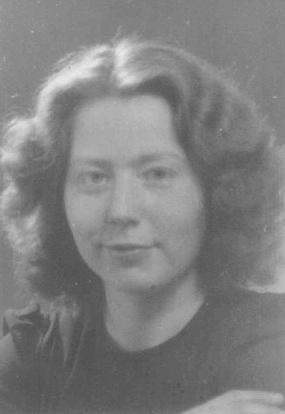 Hannie Schaft. Source: Hannie Schaft Stichting.
Hannie Schaft. Source: Hannie Schaft Stichting.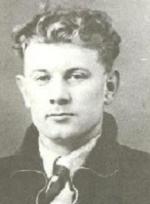 Jan Bonekamp. Source: Hannie Schaft Stichting.
Jan Bonekamp. Source: Hannie Schaft Stichting.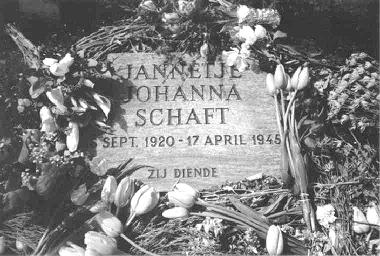 Hannie Schafts grave. The only woman burried at the Cemetery of Honour in the Kennemer dunes near Bloemendaal / Overveen. Source: Hannie Schaft Stichting.
Hannie Schafts grave. The only woman burried at the Cemetery of Honour in the Kennemer dunes near Bloemendaal / Overveen. Source: Hannie Schaft Stichting. After the war among others squares were named after Hannie Schaft. Source: Hannie Schaft Stichting.
After the war among others squares were named after Hannie Schaft. Source: Hannie Schaft Stichting.Information
- Translated by:
- Peter ter Haar
- Published on:
- 19-01-2025
- Feedback?
- Send it!

